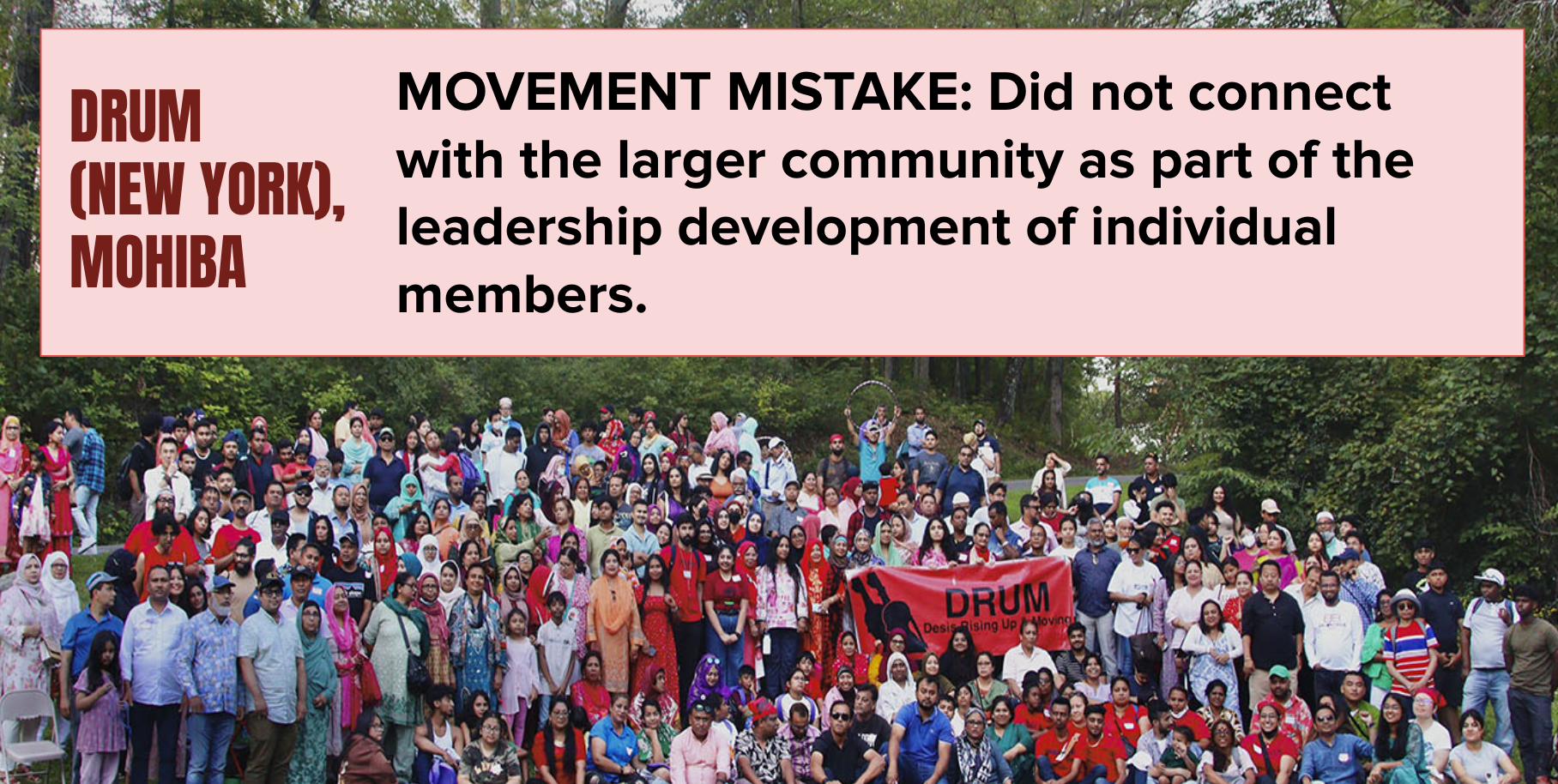There are No Shortcuts to Organizing
How can we build grassroots organizations with working-class membership bases? We’re not starting from scratch! Our movements have long histories, and with that, we’ve learned lessons from so many movement mistakes, especially when it comes to building working-class bases and leadership development processes.
Mitchell from ACE (Virginia) shared how they had to learn to go where their members are and want to go. ACE learned this when they pivoted their organizing to support their members, many of whom were Uber and Lyft drivers unfairly dealing with declining wages and lack of pay transparency.
Initially, ACE was doing housing organizing but struggled with a stagnant membership of only 20-30 people consistently joining their programs and actions out of 1000 potential members. This work also did not resonate or move their membership of working-class AAPIs. ACE often found themselves organizing other Black and Brown communities instead of working-class, AAPI communities.
Eventually, a Bangladeshi member of ACE asked for help with their workplace issues with Uber and Lyft. They expressed that many local workers in Virginia were being exploited by Lyft and Uber as these companies were increasingly taking more of the fare drivers earn and are increasing the prices charged to passengers, while local drivers are making less and less in the midst of inflation.
Within months, ACE was building up a base of hundreds of Lyft and Uber drivers in Virginia who were protesting rideshare companies’ increasingly unfair policies. Through this process, ACE has learned the need to constantly re-evaluate with their membership about what their organizational priorities should be in order to meet members where they are and want to go.
Mohiba from DRUM (NYC) shared how DRUM had not put enough effort into gaining the trust of community institutions in the past, making it hard for them to build membership bases in certain neighborhoods.
After 9/11, South Asian and Indo-Caribbean communities in New York City were severely impacted by increased surveillance and policing. These communities became extremely isolated and distrustful, especially due to the rampant amount of New York Police Department informants that infiltrated and took leadership in community spaces. Although DRUM had built up a base through doing crisis management and service work post-9/11, the organization was distrusted because they had no relationships to community leadership and institutions.
In order to build a membership base, DRUM realized that they needed to shift their strategy to build an identity for DRUM that wasn’t just tied to issues of policing and surveillance. To do this, DRUM turned to organizing around issues like immigration and Palestinian liberation, so that community members would feel more comfortable to join DRUM’s work. While doing this, DRUM built relationships with other organizations and institutions that held large influence in local communities.
Eventually, DRUM was able to begin working directly with people who were violently impacted by the NYPD’s policing and surveillance. DRUM also began facilitating political education on safety so community members could learn how to protect themselves without relying on the NYPD. With this, DRUM began to convince their communities that alternatives to policing are possible.
Now with more community trust, DRUM was able to involve the entire community in direct actions by identifying what role each person could play in DRUM’s organizing work. Today, DRUM is more equipped and informed to have continued presence in larger community spaces and institutions.
Tiffany from CPA (San Francisco, CA) shared that if we want people to care about local, state, and national elections, we need to organize around working-class material needs first, such as local tenant and labor organizing.
CPA built rigor in how organizers train members to actually take action for voting. They learned that people will not want to vote if they cannot see their vote matters to improve their day to day conditions. This was possible when CPA framed elections within their existing workers’ rights and tenant organizing, focusing on ballot measures that really would shift working-class people’s conditions in San Francisco, such as increased minimum wage, protections for workers, progressive tax laws, and free city college and vocational training. In this way, working-class people can understand elections as one tool we can use to improve our day-to-day lives.
CPA has really come to grapple with how hard this can be in the electoral fights around public safety in San Francisco and California. Rather than just talking about public safety when it comes up on the ballot, CPA organizers understand that this is a constant concern for working-class communities. And so, throughout the year (not just during election season or important election years), CPA talks to their members about public safety to reframe the conversation beyond just policing. Similar to DRUM, CPA is working to convince their communities that alternatives to policing are possible, but this takes lots of time and trust.
We need strong grassroots organizing with the leadership of working-class people. We can learn from our past movement mistakes to grow stronger organizers today. GAR is committed to growing the strength of local organizations to win material changes for our working-class, pan-Asian communities. Grassroots organizing is how we have and will continue to protect our communities, so let’s get organized and learn from our movements’ past mistakes!



